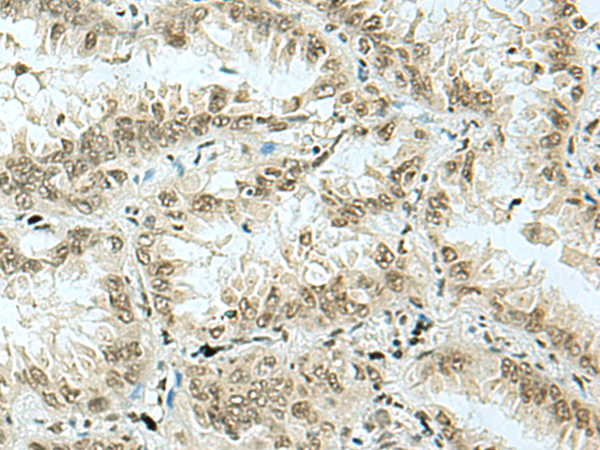HAS1 Polyclonal Antibody
For reference only. Please follow the manual included in your kit for instructions.
Catalog Number
RD219341A
Product Name
HAS1 Polyclonal Antibody
Catalog Number
RD219341A
Clonality
Polyclonal
Purification Method
Antigen affinity purification
Isotype
IgG
Host
Rabbit
Background
Hyaluronan or hyaluronic acid (HA) is a high molecular weight unbranched polysaccharide synthesized by a wide variety of organisms from bacteria to mammals, and is a constituent of the extracellular matrix. It consists of alternating glucuronic acid and N-acetylglucosamine residues that are linked by beta-1-3 and beta-1-4 glycosidic bonds. HA is synthesized by membrane-bound synthase at the inner surface of the plasma membrane, and the chains are extruded through pore-like structures into the extracellular space. It serves a variety of functions, including space filling, lubrication of joints, and provision of a matrix through which cells can migrate. HA is actively produced during wound healing and tissue repair to provide a framework for ingrowth of blood vessels and fibroblasts. Changes in the serum concentration of HA are associated with inflammatory and degenerative arthropathies such as rheumatoid arthritis.
Immunogen Information
Immunogen
Synthetic peptide of human HAS1
Swissprot
Q92839
Synonyms
HA synthase 1HASHAS1HuHAS1Hyaluronan synthase 1Hyaluronate synthase 1Hyaluronic acid synthase 1HYAS1
Gene Accession
NP001514
Applications
Reactivity
Human, Mouse
Tested Applications
IHC,ELISA
Conjugation
Unconjugated
Dilution
IHC 1:50-1:200, ELISA 1:5000-1:10000
Concentration
0.96 mg/mL
Storage Buffer
PBS with 0.05% NaN3 and 40% Glycerol, pH7.4
Storage Instructions
Store at -20°C. Avoid freeze / thaw cycles.

